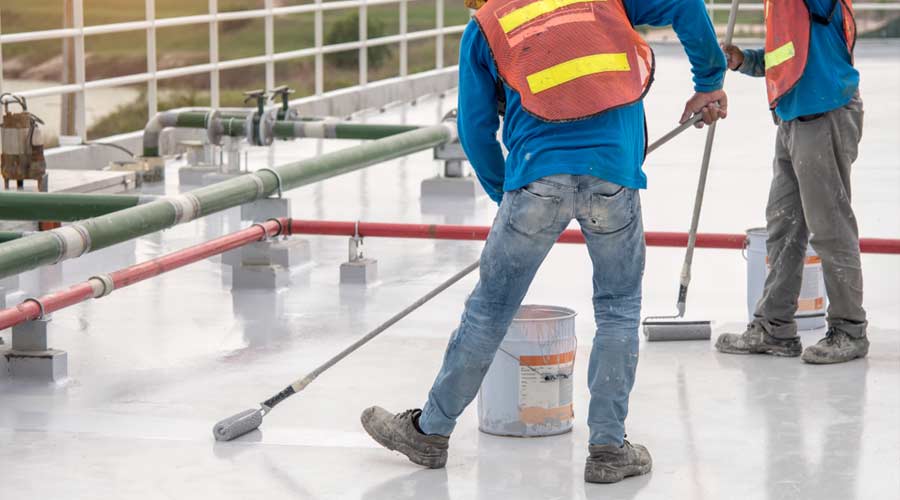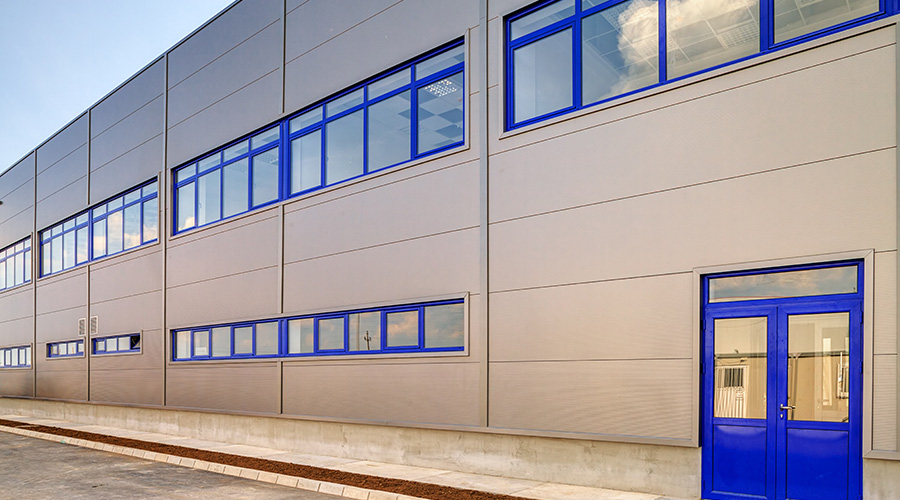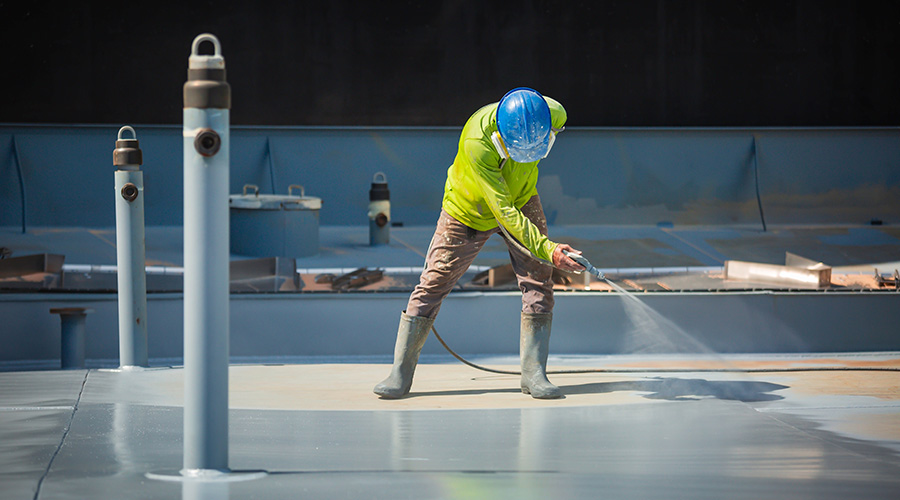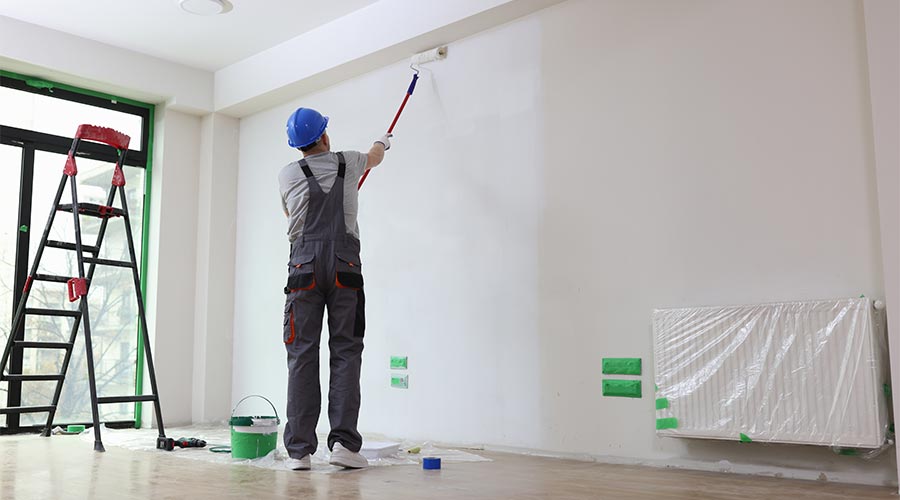How to Extend Roof Coatings to Save Money
Selection, installation and maintenance are critical ingredients in long-term performance.
This is part two of a two-part article. To read the first part, please click here.
Facility protection starts with the original roof and continues through its life and the life of coatings. Benefits of these components include weather protection for occupants and assets, safety against fire and storm threats, and security against unauthorized intrusion. Critical to ensuring these benefits become reality is preparing the surface for application of the coating.
High-quality materials and effective installation practices can make the difference between low-cost routine repairs over a long lifetime and higher-cost, premature replacement over a short lifetime. A dry surface cleaned and free of dust and loose material is essential. This element, plus washing and power washing to remove scale, mold, and stains, are the most effective preparation for coatings. After cleaning asphalt roofs, for example, technicians must repair defects with neoprene coating and then cover the deck with asphalt coating.
The quality of a coating application depends to a great degree on the underlying membrane quality, condition and remaining life. Temperature and absence of moisture are extremely critical. Temperature must be at least 40 degrees, and the surface must be dry with no rain forecast for at least 24 hours.
Inspection and repair
Hiring a certified roof specialist to perform a forensic inspection is an excellent way for managers to develop and implement a roof and coating maintenance plan for five important reasons:
- The specialist is more likely to find all visible roof damage and, more importantly, hidden damage.
- They can help managers reduce interior and exterior building damage.
- They can provide a written record of findings, remaining life and recommendations for future actions.
- They support claims against the roof warranty.
- They can combine all of these advantages to lower life cycle costs.
Some warranties only allow certified roofing inspectors, sometimes only the installer, to perform inspections. Using the installer for inspections offers the advantage that the installer knows exactly the steps taken during the installation. For example, if there were known difficult areas during installation — penetrations, flashings and sharp corners, for example — installers can recommend taking more time to find problems that might have come up and seal them.
Supporting this effort, in-house maintenance specialists should follow up in fall and spring to prepare the roof and the coating for winter stresses and check for winter damage respectively, in climates where necessary. They also must check the roof after storms to look for damage to seams, flashings and penetrations, where leaks are more likely to start.
Coatings are subject to punctures from falling objects, including debris, tree limbs, mechanical equipment parts and tools left on the roof. Pictures and written, dated records are valuable for detecting repeated wear trends that might indicate a need for starting or improving a preventive roof maintenance plan.
Trouble out of sight
Some warranties protect against ponding, but they do not cover damage below the membrane because it is difficult to estimate and can cost more than the membrane repair. Ponding occurs at a low spot in a roof and prevents water from getting to the drain scupper. If the roof has five of these drains, there might be five ponds caused by an installation defect or settling.
Water can stay in these ponds for more than a day after a rain, collecting dirt from the air or washed from a higher point on the roof. Tests have shown the water, dirt and absorbed ultraviolet rays can shorten roof life, so it is essential that technicians broom away dirt, debris and water after storms.
Among the tests that technicians can use to determine roof membrane condition are non-destructive, such as thermography, and destructive, such as coring. A thermography technician measures roof dimensions or uses unmanned aerial vehicle — drone — thermography to assess from a distance, scan the roof and record the readings. Selectable infrared colors for temperature ranges appear on the screen, showing relative temperature — for example, red for higher temperatures and blue for lower temperatures. In the evening after a sweltering day, blue indicates cooled surfaces, while red indicates warmer areas where water is trapped underneath and retains warm longer.
Managers also can deploy drones to clean solar panels. Accumulated dust and dirt cause panels to lose efficiency, which costs money. With cleaning equipment attached, drones fly over the panels at high speed and quickly remove dust and dirt. The drones take less time to perform the task than a person would, and they do not damage the roof, which can occur due to cleaners’ foot traffic on the roof.
Coring technicians use a sharp instrument to cut a core through all roof layers to sample for remaining layer thickness and moisture caused by leaks. They then replace the core, sealing it so it will not leak from the core site. One disadvantage of coring is that it only evaluates a small area near the core, while thermography covers an entire roof. An effective use of coring is to perform it where a known problem exists, such as at ponding locations or where a leak is known to have occurred.
Maintenance technicians might detect damage during a storm when leaks appear inside the facility. To prepare for this situation, managers need to make sure that materials such as neoprene cement for asphalt roofs or liquid rubber for many roof types, along with brushes are available for emergency repairs. Manufacturers formulate this wet application coating so it will adhere, even during rain, to seal leaks and shorten the time during which inside damage can occur.
With the many choices and combinations of roof types and coatings that managers have, it pays to have good advice. Managers can find a variety of installation and maintenance plans online, as well as costs for a starting point. But a roof consultant or manufacturer’s representative often is the best source to assist with selecting products for specific conditions and roof types.
With so many improved products, managers should avoid replacing a roof coating with the same product that was used on the roof 20 years ago. They also need to pay attention to training available from roofing product manufacturers for all aspects of roofing types and coating installation and repair. These resources include thermography training. With this training, technicians can use thermography to support inspection and winterization of facilities. Getting ahead of the leaks and using in-house technicians offer potential savings that exceed their costs.
Thomas A. Westerkamp is a maintenance and engineering management consultant and president of the work management division of Westerkamp Group LLC.
Related Topics:













